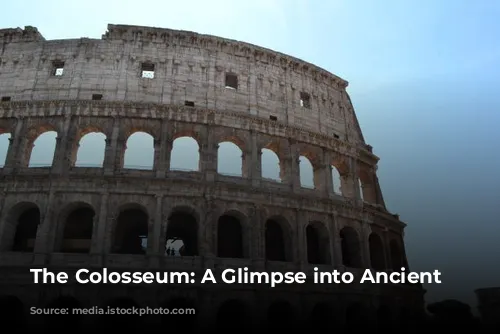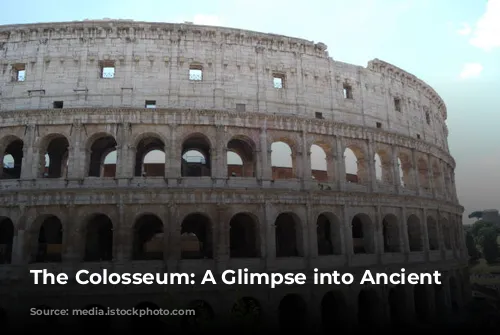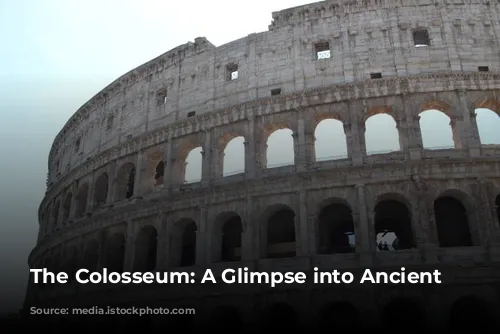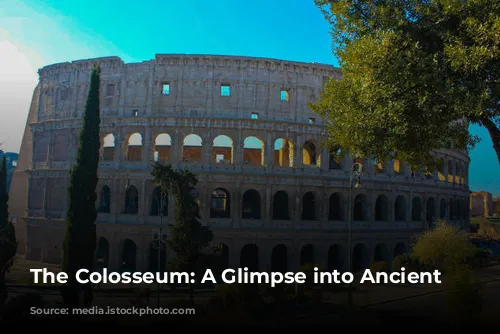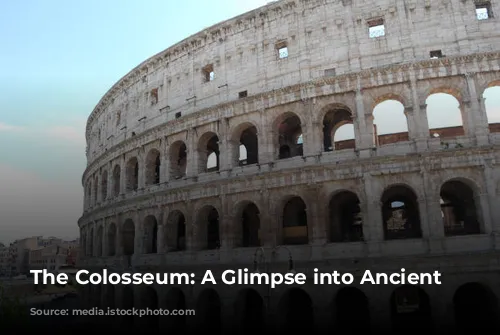The Colosseum, also known as the Flavian Amphitheatre, is a monument that needs no introduction. It stands as a testament to the grandeur and power of the Roman Empire, drawing millions of visitors every year. Its imposing presence and rich history make it one of the most famous landmarks in the world.
A Monument of Power and Spectacle
Emperor Vespasian, the founder of the Flavian dynasty, initiated the construction of the Colosseum. His son, Titus, completed the colossal structure in 80 AD. Its inauguration was a spectacle of unparalleled grandeur, lasting 100 days and featuring gladiatorial combats, animal hunts, and even mock naval battles known as naumachias. The Colosseum was designed to be a breathtaking display of Roman power and ingenuity.
The Colosseum: A Marvel of Engineering
The Colosseum’s immense scale and architectural prowess were unparalleled in the ancient world. Constructed from travertine stone, it boasts a majestic elliptical shape to accommodate a massive audience. The building’s four tiers, featuring eighty arches each, were adorned with statues. The Roman mastery of the arch, evident in structures like aqueducts, is showcased prominently in the Colosseum’s construction. This architectural feat allowed for the distribution of the weight of the massive structure, enabling it to stand the test of time for millennia.
The Colosseum: A Source of Material for Future Generations
While the Colosseum stands as a symbol of the Roman Empire’s grandeur, it also bears the scars of time. Its outer brick walls have been stripped of their original beauty, leaving only a skeletal silhouette of its former glory. This is due to its unfortunate fate in the Middle Ages, when the Colosseum was treated as a quarry for building materials. The holes in the columns are evidence of the extraction of lead and iron for use in prestigious projects such as the Barberini Palace, Piazza Venezia, and even St. Peter’s Basilica.
A Place for Entertainment and Social Hierarchy
The Colosseum, a precursor to modern sports stadiums, could accommodate up to 70,000 spectators. Its tiered seating was designed to provide optimal viewing for all. Though entry was free for Roman citizens, seating was strictly organized according to social status, mirroring the social hierarchy of the time. While commoners occupied the upper seats, the closer one sat to the arena, the higher their social standing. Senators, vestals, priests, and the emperor occupied the front row, enjoying the best views of the spectacles. The Colosseum, much like modern sporting events, also featured a sophisticated system of awnings, known as the Velarium, to protect spectators from the scorching Roman sun.
A Stage for Gladiatorial Combat
The arena itself was a stage for an array of spectacles, with the most popular being the gladiatorial combats. These gladiators, skilled warriors, were a mix of prisoners of war, paupers seeking fortune, and even individuals seeking fame. They fought with a variety of weapons, from nets and tridents to shields and swords. The audience’s excitement peaked during these events, with gladiators receiving great fanfare, akin to modern sports stars, upon their entrance. The gladiatorial duels were not just displays of physical prowess; they were theatrical productions, where the skill and courage of the combatants captivated the audience.
A Legacy of Blood and Entertainment
The Colosseum witnessed a variety of spectacles, including animal hunts and public executions. These events were often brutal and gruesome, mirroring the Roman fascination with violence. The spectators, with their love for these shows, bear some resemblance to modern audiences who enjoy “splatter” cinema. However, the difference lies in the visceral reality of the Colosseum, where the stench of blood and burnt flesh permeated the air, making the events even more chilling.
From Spectacles to Symbolism
Despite its brutal history, the Colosseum has transcended its origins. Its grandeur and historical significance have made it a symbol of Roman power and civilization. Though the Colosseum’s use as a venue for gladiatorial combat ceased centuries ago, it remains a powerful symbol of the Roman past. In the centuries following its decline, it was repurposed as a home for confraternities, hospitals, and even a cemetery. This further testifies to the Colosseum’s endurance and its ability to adapt to the changing tides of time.
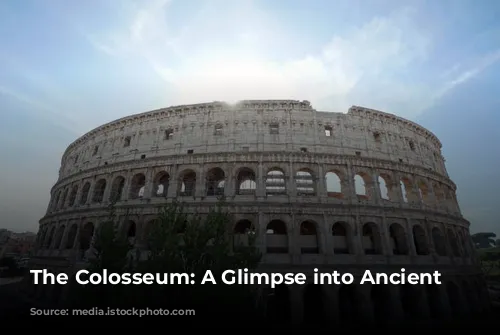
A Monument of Faith
In the 18th century, Pope Benedict XIV recognized the Colosseum’s historical significance, declaring it a sacred monument dedicated to the Passion of Christ. A cross was placed on a pedestal, symbolizing the suffering of Christian martyrs. This act transformed the Colosseum into a site of pilgrimage for Christians, offering a poignant reminder of the suffering endured by early Christians.
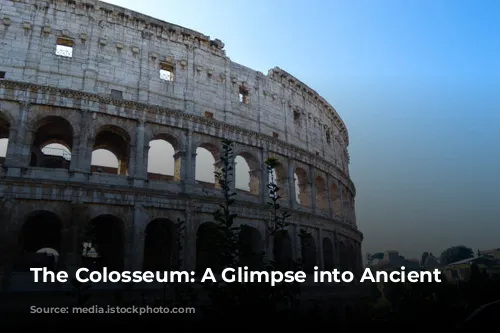
A Timeless Symbol
The Colosseum stands today as a testament to the enduring power of history and the remarkable ingenuity of the ancient Romans. It offers a unique glimpse into the world of the Roman Empire, revealing both its brutality and its grandeur. The Colosseum, a true icon of Rome, continues to captivate and inspire visitors, showcasing the rich history and legacy of the Roman world.
